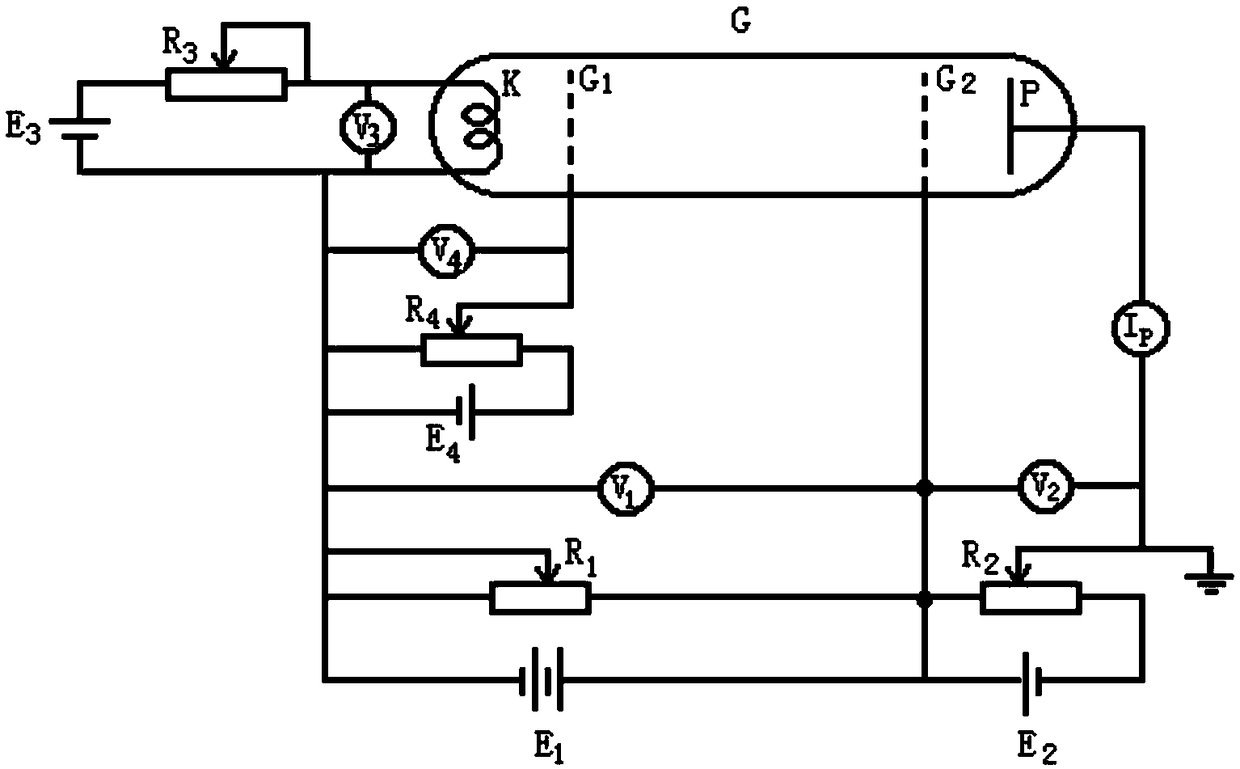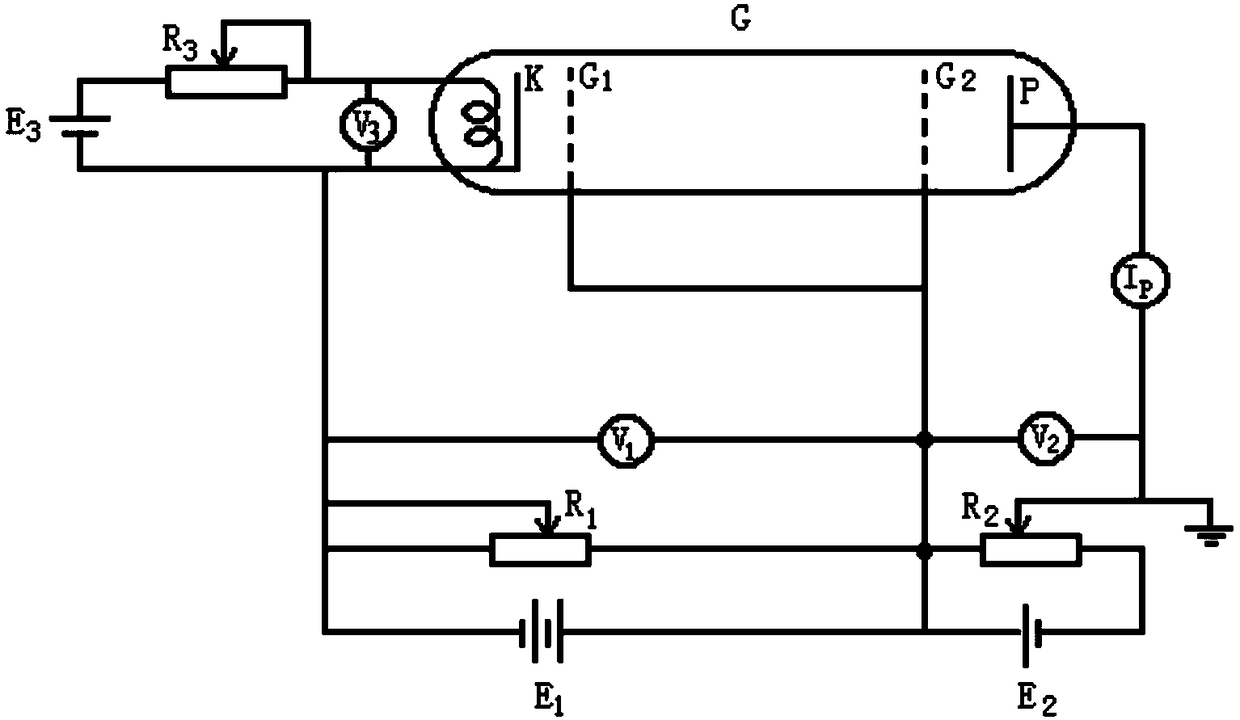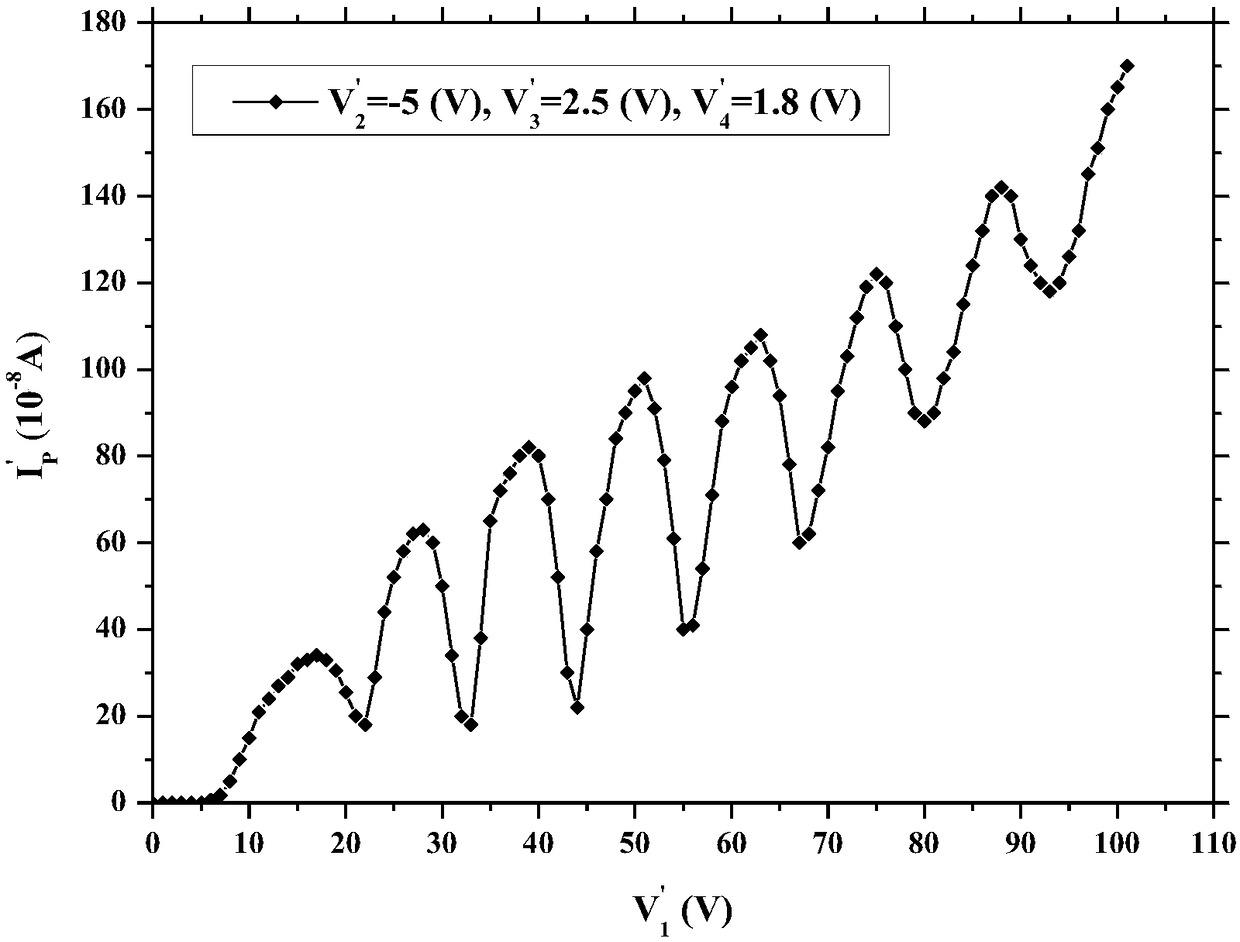Method for measuring second excitation potential of argon atoms
A technology of excitation potential and measurement method, which is applied in measuring devices, measuring electrical variables, measuring current/voltage, etc., can solve problems such as difficulty in obtaining high-energy electrons, difficulty in observing the excitation potential of argon atoms, and few measurement studies
- Summary
- Abstract
- Description
- Claims
- Application Information
AI Technical Summary
Problems solved by technology
Method used
Image
Examples
Embodiment 1
[0082] Take plate reverse voltage V' 2 =-5(V), filament voltage V' 3 =2.5(V), the first gate voltage V' 4=1.8(V) to measure the first excitation potential U of the argon atom 1 , and with plate reverse voltage V 2 =-2(V) and filament voltage V 3 = 4 (V) to measure the second excitation potential U of the argon atom 2 As an example.
[0083] Firstly, the traditional quadrupole tube Frank-Hertz experimental device (see figure 1 ) to measure the first excitation potential U of the argon atom 1 , image 3 is the plate reverse voltage V' 2 =-5(V), filament voltage V' 3 =2.5(V), the first grid voltage V' 4 =1.8(V) to measure the first excitation potential U of the argon atom 1 Plate current I′ when P With the acceleration voltage V' 1 The change curve of I′ P ~V' 1 curve. from image 3 It can be seen that initially when the accelerating voltage V' 1 Plate current I when increasing from 0(V) to 5(V) p 'The reason why it remains at 0(A) is due to the plate reverse v...
PUM
 Login to View More
Login to View More Abstract
Description
Claims
Application Information
 Login to View More
Login to View More - R&D
- Intellectual Property
- Life Sciences
- Materials
- Tech Scout
- Unparalleled Data Quality
- Higher Quality Content
- 60% Fewer Hallucinations
Browse by: Latest US Patents, China's latest patents, Technical Efficacy Thesaurus, Application Domain, Technology Topic, Popular Technical Reports.
© 2025 PatSnap. All rights reserved.Legal|Privacy policy|Modern Slavery Act Transparency Statement|Sitemap|About US| Contact US: help@patsnap.com



